
The Enchanting Cartagena Coast of Colombia
Discover the Cartagena Coast: A blend of history, culture, and stunning beaches along Colombia's Caribbean shoreline.
The Cartagena Coast in Colombia is a mesmerizing blend of history, culture, and natural beauty. Nestled along the Caribbean Sea, this coastal gem is renowned for its well-preserved colonial architecture, vibrant streets, and stunning beaches. The walled city of Cartagena is a UNESCO World Heritage site, where cobblestone streets and colorful buildings transport you back in time. Here, you can explore historic forts, charming plazas, and local markets that buzz with life and flavor. Beyond the historic center, the Cartagena Coast offers pristine beaches and crystal-clear waters. Playa Blanca and the Rosario Islands are popular spots for sunbathing, snorkeling, and diving. The turquoise waters teem with marine life, making it a paradise for underwater enthusiasts. Additionally, the coastline is dotted with luxurious resorts and beach clubs where you can unwind and soak up the tropical ambiance. The Cartagena Coast is not just about scenic beauty; it is a cultural hub as well. The city hosts numerous festivals throughout the year, including the famous Cartagena International Film Festival. The local cuisine is a delightful fusion of Caribbean and Colombian flavors, with fresh seafood being a highlight. Whether you are wandering through the historic streets, lounging on a sun-drenched beach, or savoring the local delicacies, the Cartagena Coast offers a captivating experience for every traveler.
Local tips in Cartagena Coast
- Visit the walled city early in the morning to avoid crowds and enjoy cooler temperatures.
- Take a boat tour to the Rosario Islands for a day of snorkeling and relaxation.
- Try local dishes like ceviche and arepas at street food stalls for an authentic taste of Cartagena.
- Wear comfortable shoes for exploring the historic streets and forts.
- Bring sunscreen and a hat to protect yourself from the strong Caribbean sun.
The Enchanting Cartagena Coast of Colombia
The Cartagena Coast in Colombia is a mesmerizing blend of history, culture, and natural beauty. Nestled along the Caribbean Sea, this coastal gem is renowned for its well-preserved colonial architecture, vibrant streets, and stunning beaches. The walled city of Cartagena is a UNESCO World Heritage site, where cobblestone streets and colorful buildings transport you back in time. Here, you can explore historic forts, charming plazas, and local markets that buzz with life and flavor. Beyond the historic center, the Cartagena Coast offers pristine beaches and crystal-clear waters. Playa Blanca and the Rosario Islands are popular spots for sunbathing, snorkeling, and diving. The turquoise waters teem with marine life, making it a paradise for underwater enthusiasts. Additionally, the coastline is dotted with luxurious resorts and beach clubs where you can unwind and soak up the tropical ambiance. The Cartagena Coast is not just about scenic beauty; it is a cultural hub as well. The city hosts numerous festivals throughout the year, including the famous Cartagena International Film Festival. The local cuisine is a delightful fusion of Caribbean and Colombian flavors, with fresh seafood being a highlight. Whether you are wandering through the historic streets, lounging on a sun-drenched beach, or savoring the local delicacies, the Cartagena Coast offers a captivating experience for every traveler.
When is the best time to go to Cartagena Coast?
Iconic landmarks you can’t miss
San Felipe de Barajas Fort
Visit San Felipe de Barajas Fort, a historical fortress in Cartagena, Colombia, known for its stunning architecture and panoramic views of the Caribbean.

Walls of Cartagena
Discover the enchanting Walls of Cartagena, a historic landmark offering breathtaking views and a glimpse into Colombia's rich colonial past.
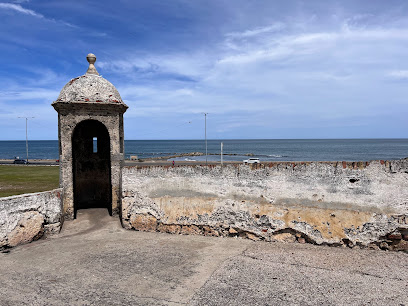
Monumento Torre del Reloj
Explore the stunning Torre del Reloj, Cartagena's iconic clock tower and gateway to the city's rich colonial history and vibrant atmosphere.

Monumento India Catalina
Discover the Monumento India Catalina, a historic symbol of Cartagena's rich cultural heritage and a must-see for every visitor exploring Colombia.

Plaza de la Trinidad
Experience the vibrant culture and history of Cartagena at Plaza de la Trinidad, a lively park in the heart of the historic Getsemani district.

Plaza de Santo Domingo
Experience the vibrant history and culture of Cartagena at Plaza de Santo Domingo, a must-see historical landmark filled with local charm and stunning architecture.

Playa De Bocagrande
Experience the vibrant atmosphere and stunning views at Playa De Bocagrande, Cartagena's premier beach destination for relaxation and adventure.

Las Bóvedas
Explore the historic Las Bóvedas in Cartagena, where colonial charm meets local artistry in a vibrant marketplace.

Plaza de Santa Teresa
Discover the vibrant Plaza de Santa Teresa in Cartagena, a historical gem surrounded by stunning architecture and rich cultural experiences.

Playa Castillo Grande
Discover Playa Castillo Grande, a stunning beach in Cartagena, Colombia, perfect for relaxation, adventure, and breathtaking sunsets.
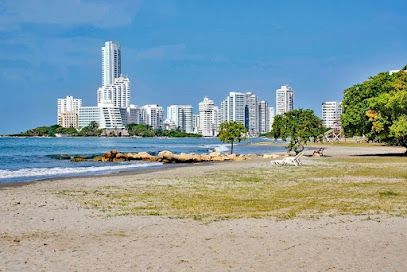
Convent of Santa Cruz de la Popa
Discover the Convent of Santa Cruz de la Popa, a historic gem offering breathtaking views and a glimpse into Colombia's rich spiritual heritage.

Museum of Cartagena de Indias
Explore the rich history of Cartagena at the Museum of Cartagena de Indias, home to fascinating exhibits on colonialism, culture, and the inquisition.

Museo Naval del Caribe
Explore Colombia's maritime history at Museo Naval del Caribe, a captivating attraction in Cartagena that showcases the nation's naval legacy.

Plaza de la Aduana
Experience the vibrant history and culture at Plaza de la Aduana, a must-visit landmark in Cartagena, Colombia, surrounded by stunning colonial architecture.

Plaza de Bolívar
Discover the vibrant atmosphere of Plaza de Bolívar, a historic square filled with culture, charm, and the spirit of Cartagena.
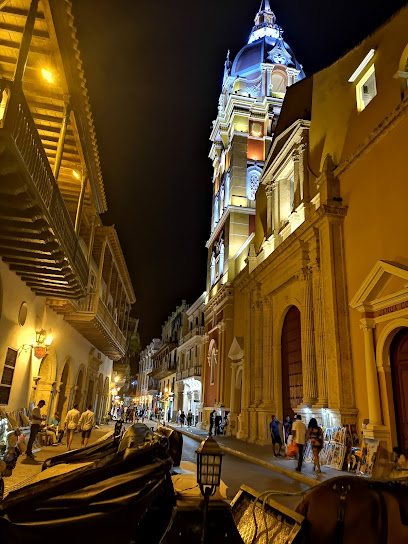
Unmissable attractions to see
Bocagrande Plaza Mall
Discover Bocagrande Plaza Mall, Cartagena's vibrant shopping destination blending local culture with modern retail and dining experiences.

Isla Punta Arena
Isla Punta Arena: A stunning Caribbean escape with pristine beaches, rich marine life, and vibrant local culture in Cartagena, Colombia.

Bora Bora Beach Club & Hotel
Experience the ultimate beach getaway at Bora Bora Beach Club & Hotel, nestled in the breathtaking Islas del Rosario, Cartagena's tropical paradise.

Bazurto Social Club
Experience the vibrant fusion of local cuisine and lively nightlife at Bazurto Social Club, a must-visit bar and grill in Cartagena.

Monumento a Gertrudis
Discover the beauty and history of Cartagena at the Monumento a Gertrudis, a cultural landmark celebrating Colombia's rich heritage.

Flanagan Park
Experience the thrill at Flanagan Park, Cartagena's premier amusement park, offering rides, games, and entertainment for all ages in a vibrant atmosphere.

Diving Planet Cartagena - Centro de Buceo
Dive into the vibrant underwater world of Cartagena with Diving Planet, where adventure meets marine exploration in the Caribbean.

Rosario and San Bernardo Corals National Natural Park
Explore the stunning marine biodiversity and pristine beaches of Rosario and San Bernardo Corals National Natural Park, a must-visit destination near Cartagena.

Xo Rooftop cartagena
Experience breathtaking views and vibrant nightlife at Xo Rooftop, Cartagena’s premier bar destination for cocktails and socializing.

Barra 7 - Cocktail Bar
Discover the lively spirit of Cartagena at Barra 7, where creative cocktails, live music, and a vibrant atmosphere await you.
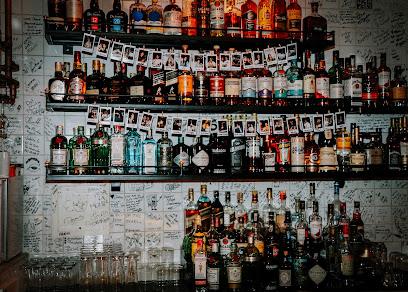
Getsemaní
Explore Getsemaní, Cartagena's vibrant neighborhood rich in culture, history, and colorful street art that captures the essence of Colombia.

Samaria Tours
Explore Cartagena's rich history and vibrant culture with Samaria Tours - your ultimate travel guide to unforgettable adventures.

LA BOCA DEL PUENTE
Explore La Boca del Puente in Cartagena - a historical gem with vibrant culture, scenic views, and a rich heritage waiting to be discovered.

National flag street
Immerse yourself in the vibrant culture of Cartagena at National Flag Street, a lively hub of art, food, and history in Getsemani.

Essential places to dine
Hard Rock Cafe
Discover the ultimate blend of rock 'n' roll culture and delicious American cuisine at Hard Rock Cafe in Cartagena's historic Old Town.

Andrés Carne de Res Cartagena
Experience vibrant Colombian cuisine at Andrés Carne de Res Cartagena – where every meal is a celebration filled with music and joy.
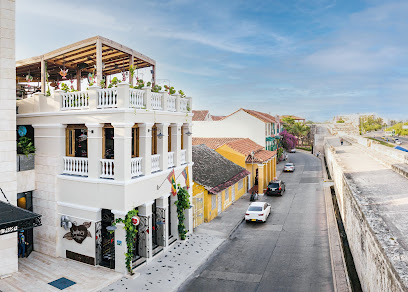
ALMA Restaurante - Bar
Experience authentic Colombian flavors at ALMA Restaurante - Bar in Cartagena's vibrant culinary scene.

Da Pietro - Restaurante Italiano & Pizzería
Experience the best of Italian and Colombian flavors at Da Pietro - your go-to dining spot in Cartagena.

La Girolata
Discover authentic Italian flavors at La Girolata, where every dish tells a story amidst Cartagena's vibrant culture.

PaloSanto Restaurante | Cartagena de Indias
Experience authentic Colombian flavors at Palo Santo Restaurante in Cartagena—where fresh seafood meets vibrant culinary traditions.

RESTAURANTE LA LANGOSTA LATINA CARTAGENA
Discover the vibrant flavors of Caribbean cuisine at Restaurante La Langosta Latina in Cartagena – a top destination for seafood lovers and event celebrations.

El Bololó | Bowls del Caribe
Discover the vibrant flavors of Caribbean vegetarian cuisine at El Bololó in Cartagena's lively Getsemaní district.

Restaurante Pizzeria dal Maestro
Experience authentic Italian cuisine at Restaurante Pizzeria dal Maestro in Cartagena - home to delicious pizzas and a welcoming atmosphere.

Amare Beach Club
Experience the essence of Cartagena at Amare Beach Club - where organic flavors meet breathtaking beachfront views.
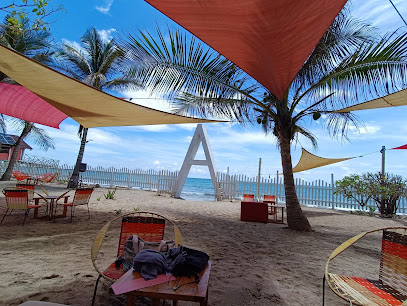
Namasté Beach Club y Centro Holístico
Experience Caribbean flavors and holistic wellness at Namasté Beach Club y Centro Holístico in Punta Arenas, Cartagena—your tropical retreat awaits!

Norma Restaurante
Experience the best of Italian cuisine in Cartagena at Norma Restaurante - where every dish tells a story of flavor.

Osteria del Mar Rojo
Discover authentic Caribbean flavors at Osteria del Mar Rojo – Cartagena's premier destination for fresh seafood delights.
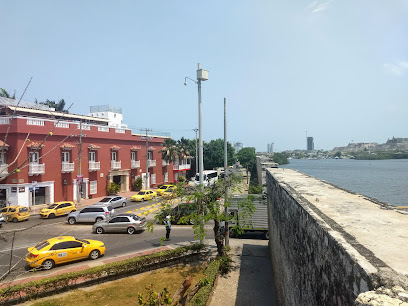
PLAYA LINDA COOL BEACH
Experience paradise at Playa Linda Cool Beach in Cartagena de Indias - where relaxation meets adventure amidst breathtaking coastal beauty.

Mariana's Beach
Experience unparalleled relaxation and vibrant nightlife at Mariana's Beach on Isla Tierra Bomba near Cartagena.

Markets, malls and hidden boutiques
Bocagrande Plaza Mall
Discover the vibrant shopping scene at Bocagrande Plaza Mall in Cartagena, where local culture meets international brands in a stunning coastal setting.

MALL Paseo de la Castellana
Explore MALL Paseo de la Castellana: Cartagena's vibrant shopping hub with diverse stores, dining, and entertainment options for an unforgettable experience.

Centro Comercial Nao
Experience the vibrant shopping scene at Centro Comercial Nao, Cartagena's premier shopping mall, featuring diverse shops, dining, and entertainment options.

Centro Comercial Centro Uno
Explore the vibrant Centro Comercial Centro Uno in Cartagena, where shopping meets local culture in a lively atmosphere.

Centro Comercial Portal de San Felipe
Explore the dynamic Centro Comercial Portal de San Felipe, a shopping haven in Cartagena with diverse stores, delicious dining, and exciting entertainment options.

Jumbo Cartagena Castillo
Discover Jumbo Cartagena Castillo, a vibrant hypermarket offering a variety of fresh produce, local delicacies, and household essentials in the heart of Cartagena.

Ábaco Libros y Café
Discover the perfect blend of literature and coffee at Ábaco Libros y Café in Cartagena, where every sip and page turn is an experience.

Ciudad Amurallada Cartagena
Discover the historic charm and vibrant culture of Ciudad Amurallada Cartagena, a UNESCO World Heritage site brimming with history and beauty.

Falabella Mall Plaza El Castillo
Explore fashion, food, and fun at Falabella Mall Plaza El Castillo, Cartagena's ultimate shopping destination for tourists.

Jumbo Caribe Plaza
Discover Jumbo Caribe Plaza, a vibrant hypermarket in Cartagena offering a diverse range of products and a taste of local Colombian culture.

Outlet del bosque
Discover unbeatable deals and a unique shopping atmosphere at Outlet del Bosque, Bogotá's premier outlet mall with diverse brands and local flavors.

Aja Company
Discover Aja Company in Cartagena for authentic souvenirs and local coffee that capture the essence of Colombian culture.

Cartagena tourism market
Experience the vibrant Cartagena tourism market, a lively destination for unique crafts, delicious street food, and rich cultural immersion.

Casa Abba - Gallery-Boutique
Immerse yourself in the artistic soul of Cartagena at Casa Abba, where quality meets creativity in a vibrant gallery-boutique.

CHIQUI HOUSE BOUTIQUE
Explore the vibrant culture of Cartagena through unique artisan gifts and local craftsmanship at Chiqui House Boutique.
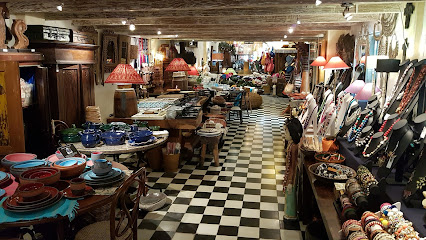
Essential bars & hidden hideouts
Alquimico
Discover Alquimico, Cartagena's vibrant cocktail bar, blending local flavors with innovative mixology in a stunning setting.

Mirador Gastro Bar
Discover the vibrant culinary scene at Mirador Gastro Bar in Cartagena, where exquisite flavors meet breathtaking views and lively nightlife.

Donde Fidel Salsa Bar
Discover the heartbeat of Cartagena nightlife at Donde Fidel Salsa Bar, where salsa rhythms and vibrant culture come alive in a memorable experience.
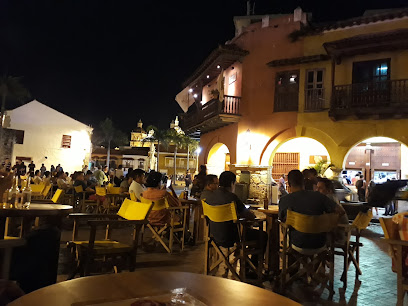
Bourbon St. Cartagena
Experience the vibrant culinary scene at Bourbon St. Cartagena, where delicious grilled dishes meet lively nightlife in the heart of the city.

The Clock Pub Cartagena
Experience the lively atmosphere at The Clock Pub in Cartagena, where delicious food meets exciting entertainment from live music to karaoke nights.
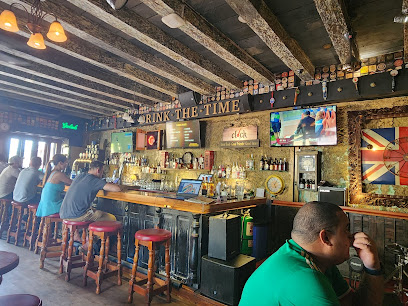
El Arsenal: The Rum Box
Discover the vibrant flavors and rich rum culture of Cartagena at El Arsenal: The Rum Box, a must-visit grill and cocktail bar in Getsemaní.

El Barón
Discover El Barón, Cartagena's cocktail gem blending traditional flavors with modern mixology in a vibrant atmosphere.

51 Sky Bar
Experience the stunning views and vibrant atmosphere at 51 Sky Bar, Cartagena's premier live music bar overlooking the Caribbean Sea.

Beer Lovers Cartagena
Discover the vibrant craft beer scene at Beer Lovers Cartagena, where local and international brews come together in a lively atmosphere.

Bar Tu Candela
Discover the lively ambiance and delicious offerings at Bar Tu Candela, Cartagena's premier destination for gourmet burgers and vibrant nightlife.

Delirium Gastro Bar
Delirium Gastro Bar offers a perfect blend of nightlife, delicious food, and crafted cocktails in the heart of Cartagena.

Mondo Cocktail Bar
Discover Mondo Cocktail Bar in Cartagena, where innovative cocktails inspired by global cities await you in a vibrant and inviting atmosphere.
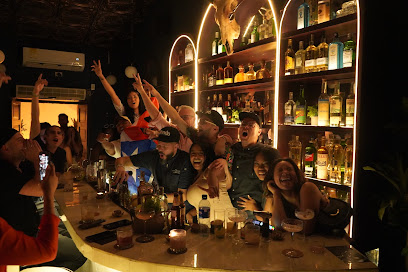
Monkey Bar
Discover the vibrant nightlife at Monkey Bar in Cartagena's historic center, a must-visit for cocktails, shisha, and unforgettable memories.
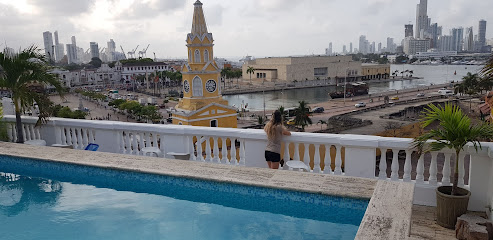
El Coro Lounge Bar
Discover luxury and flavor at El Coro Lounge Bar, Cartagena's top spot for exquisite cocktails and culinary delights in an elegant setting.

Members Only
Experience the enchanting atmosphere of Members Only, a premier piano bar in Cartagena with live music, exquisite cocktails, and delectable sushi.

Local Phrases about Cartagena Coast
-
- HelloHola
[oh-la] - GoodbyeAdiós
[ah-dee-ohs] - YesSí
[see] - NoNo
[noh] - Please/You're welcomePor favor/De nada
[por fah-vor/de nah-dah] - Thank youGracias
[grah-see-ahs] - Excuse me/SorryPerdón/Lamento
[pair-dohn/lah-men-toh] - How are you?¿Cómo estás?
[koh-moh es-tahs] - Fine. And you?Bien. ¿Y tú?
[byen. ee too] - Do you speak English?¿Hablas inglés?
[ah-blahs een-glays] - I don't understandNo entiendo
[noh en-tee-en-doh]
- HelloHola
-
- I'd like to see the menu, pleaseMe gustaría ver el menú, por favor
[may goo-stah-ree-ah ver el meh-noo, por fah-vor] - I don't eat meatNo como carne
[noh koh-moh kahr-neh] - Cheers!¡Salud!
[sah-lood] - I would like to pay, pleaseMe gustaría pagar, por favor
[may goo-stah-ree-ah pah-gar, por fah-vor]
- I'd like to see the menu, pleaseMe gustaría ver el menú, por favor
-
- Help!¡Ayuda!
[ah-yoo-dah] - Go away!¡Vete!
[veh-teh] - Call the Police!¡Llama a la Policía!
[yah-mah ah lah poh-lee-see-ah] - Call a doctor!¡Llama a un médico!
[yah-mah ah oon meh-dee-koh] - I'm lostEstoy perdido/a
[es-toy pair-dee-doh/ah] - I'm illEstoy enfermo/a
[es-toy en-fehr-moh/ah]
- Help!¡Ayuda!
-
- I'd like to buy...Me gustaría comprar...
[may goo-stah-ree-ah kohm-prar] - I'm just lookingSolo estoy mirando
[soh-loh es-toy mee-rahn-doh] - How much is it?¿Cuánto cuesta?
[kwan-toh kwehs-tah] - That's too expensiveEsto es demasiado caro
[es-toh es deh-mah-see-ah-doh kah-roh] - Can you lower the price?¿Puedes bajar el precio?
[pweh-dehs bah-har el preh-see-oh]
- I'd like to buy...Me gustaría comprar...
-
- What time is it?¿Qué hora es?
[keh oh-rah es] - It's one o'clockEs la una en punto
[es lah oo-nah en poon-toh] - Half past (10)Son las diez y media
[sohn lahs dyehs ee meh-dee-ah] - MorningMañana
[mah-nyah-nah] - AfternoonTarde
[tahr-deh] - EveningNoche
[noh-cheh] - YesterdayAyer
[ah-yehr] - TodayHoy
[oy] - TomorrowMañana
[mah-nyah-nah] - 1Uno
[oo-noh] - 2Dos
[dohs] - 3Tres
[trehs] - 4Cuatro
[kwah-troh] - 5Cinco
[seen-koh] - 6Seis
[says] - 7Siete
[syeh-teh] - 8Ocho
[oh-choh] - 9Nueve
[nweh-veh] - 10Diez
[dyehs]
- What time is it?¿Qué hora es?
-
- Where's a/the...?¿Dónde está un/el...?
[dohn-deh es-tah oon/el] - What's the address?¿Cuál es la dirección?
[kwal es lah dee-rek-see-on] - Can you show me (on the map)?¿Puedes mostrarme (en el mapa)?
[pweh-dehs mohs-trar-meh (en el mah-pah)] - When's the next (bus)?¿Cuándo es el próximo (autobús)?
[kwan-doh es el proh-kshee-moh (ow-toh-boos)] - A ticket (to ....)Un boleto (a ....)
[oon boh-leh-toh (ah)]
- Where's a/the...?¿Dónde está un/el...?
History of Cartagena Coast
-
Cartagena de Indias was founded on June 1, 1533, by Spanish commander Pedro de Heredia. The city quickly became a strategic port for the Spanish empire due to its location on the northern coast of Colombia, providing a crucial link between Spain and its colonies.
-
During the Spanish colonial period, Cartagena flourished as a major port city. It became a central hub for trade, especially in gold, silver, and African slaves. The city's wealth attracted pirates and privateers, leading to repeated attacks and the need for formidable fortifications.
-
To protect against pirate attacks, the Spanish Crown commissioned the construction of massive walls around Cartagena. Starting in the late 16th century and completed in the 18th century, these walls and fortresses, like Castillo San Felipe de Barajas, stand as testaments to the city's strategic importance and architectural prowess.
-
Cartagena was a significant player in Colombia's fight for independence from Spain. The city declared independence on November 11, 1811, becoming one of the first cities in Colombia to do so. This act of defiance earned it the nickname 'La Heroica,' or 'The Heroic City.'
-
Cartagena has a rich African heritage, a legacy of the transatlantic slave trade. African slaves brought to the city contributed significantly to its cultural fabric, influencing music, dance, cuisine, and religious practices. Palenque de San Basilio, a nearby village, is a UNESCO-recognized site where African traditions have been preserved.
-
Following independence, Cartagena played a central role in the development of the Republic of Colombia. The city underwent modernization in the late 19th and early 20th centuries, with improvements in infrastructure and the establishment of educational and cultural institutions.
-
In 1984, Cartagena's historic center, including its walls and fortifications, was declared a UNESCO World Heritage Site. This recognition helped preserve the city's colonial architecture and historical significance, making it a top destination for tourists worldwide.
-
Cartagena has inspired many writers, most notably Gabriel García Márquez, the Nobel laureate in literature. His works, such as 'Love in the Time of Cholera,' feature the city's vivid landscapes and rich history, cementing Cartagena's place in literary history.
-
One of the most important cultural events in Cartagena is the Festival of the Sea, held annually in late July. This celebration showcases the city's maritime heritage with parades, water sports, and concerts, reflecting the vibrancy and diversity of Cartagena's culture.
Cartagena Coast Essentials
-
Cartagena is accessible by air, sea, and land. Rafael Núñez International Airport (CTG) is the main gateway for international and domestic flights. Direct flights are available from major cities in North America, South America, and Europe. Cruise ships also frequently dock at Cartagena's port. For those traveling by land, buses connect Cartagena with major cities in Colombia, including Bogotá, Medellín, and Barranquilla.
-
Within Cartagena, taxis and ride-sharing services like Uber are readily available and relatively affordable. For a more local experience, you can use the Transcaribe bus system, which connects various parts of the city. Renting a bicycle or scooter is another popular option for exploring the historic center and nearby neighborhoods. Walking is often the best way to navigate the narrow, cobblestone streets of the Old Town.
-
The official currency in Colombia is the Colombian Peso (COP). Credit and debit cards are widely accepted in hotels, restaurants, and larger stores, but it's advisable to carry some cash for smaller establishments and street vendors. ATMs are plentiful, especially in tourist areas, but be cautious and use machines located in secure places like shopping malls or banks.
-
Cartagena is generally safe for tourists, but it’s important to exercise caution. Avoid displaying valuables and be aware of pickpockets, especially in crowded areas like the Old Town and markets. Some neighborhoods, such as La Popa and parts of the outskirts, have higher crime rates and are best avoided after dark. Stick to well-lit, busy areas and consider using registered taxis or ride-sharing services for transportation at night.
-
In case of an emergency, dial 123 for police, fire, or medical assistance. Rafael Núñez International Airport has a medical clinic for travelers. Major hospitals in Cartagena include Hospital Universitario del Caribe and Clínica Medihelp. It’s recommended to have travel insurance that covers medical emergencies. For minor health issues, pharmacies are available throughout the city where you can purchase over-the-counter medications.
-
Fashion: Do dress comfortably but modestly. Light clothing is recommended due to the tropical climate, but avoid overly revealing attire. Religion: Do respect religious customs, especially when visiting churches. Wear appropriate clothing and keep noise to a minimum. Public Transport: Do be respectful and offer your seat to elderly passengers. Avoid eating and drinking on public transport. Greetings: Do greet people with a handshake or a simple 'Hola.' Colombians are generally warm and friendly. Eating & Drinking: Do try local dishes like ceviche and arepas. Avoid drinking tap water; opt for bottled water instead.
-
To experience Cartagena like a local, visit the Bazurto Market, where you can find fresh produce, local cuisine, and unique souvenirs. Take a stroll along the city walls for stunning views of the Caribbean Sea. Engage with locals—Cartageneros are known for their hospitality and are often willing to share tips and stories. Don’t miss the chance to enjoy a sunset from Café del Mar, a popular spot on the city wall.
Trending Landmarks in Cartagena Coast
-
San Felipe de Barajas Fort
-
Walls of Cartagena
-
Monumento Torre del Reloj
-
Monumento India Catalina
-
Plaza de la Trinidad
-
Plaza de Santo Domingo
-
Playa De Bocagrande
-
Las Bóvedas
-
Plaza de Santa Teresa
-
Playa Castillo Grande
-
Convent of Santa Cruz de la Popa
-
Museum of Cartagena de Indias
-
Museo Naval del Caribe
-
Plaza de la Aduana
-
Plaza de Bolívar
Nearby Cities to Cartagena Coast
-
Things To Do in Barranquilla
-
Things To Do in Sincelejo
-
Things To Do in Santa Marta
-
Things To Do in Riohacha
-
Things To Do in San Blas Islands
-
Things To Do in Cúcuta
-
Things To Do in Medellín
-
Things To Do in Portobelo
-
Things To Do in Panama City
-
Things To Do in Colon
-
Things To Do in Tunja
-
Things To Do in Manizales
-
Things To Do in Las Tablas
-
Things To Do in Chitre
-
Things To Do in Pereira













